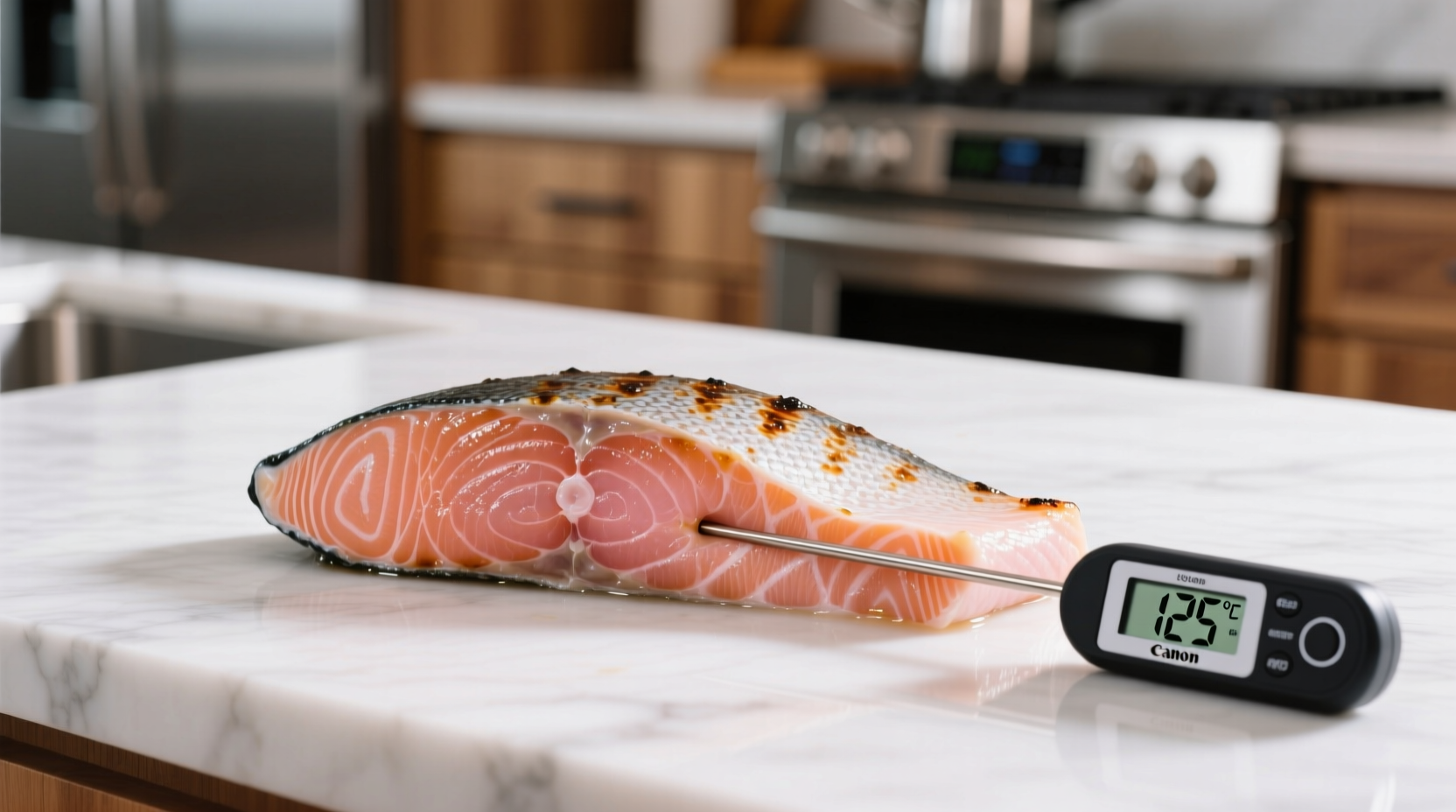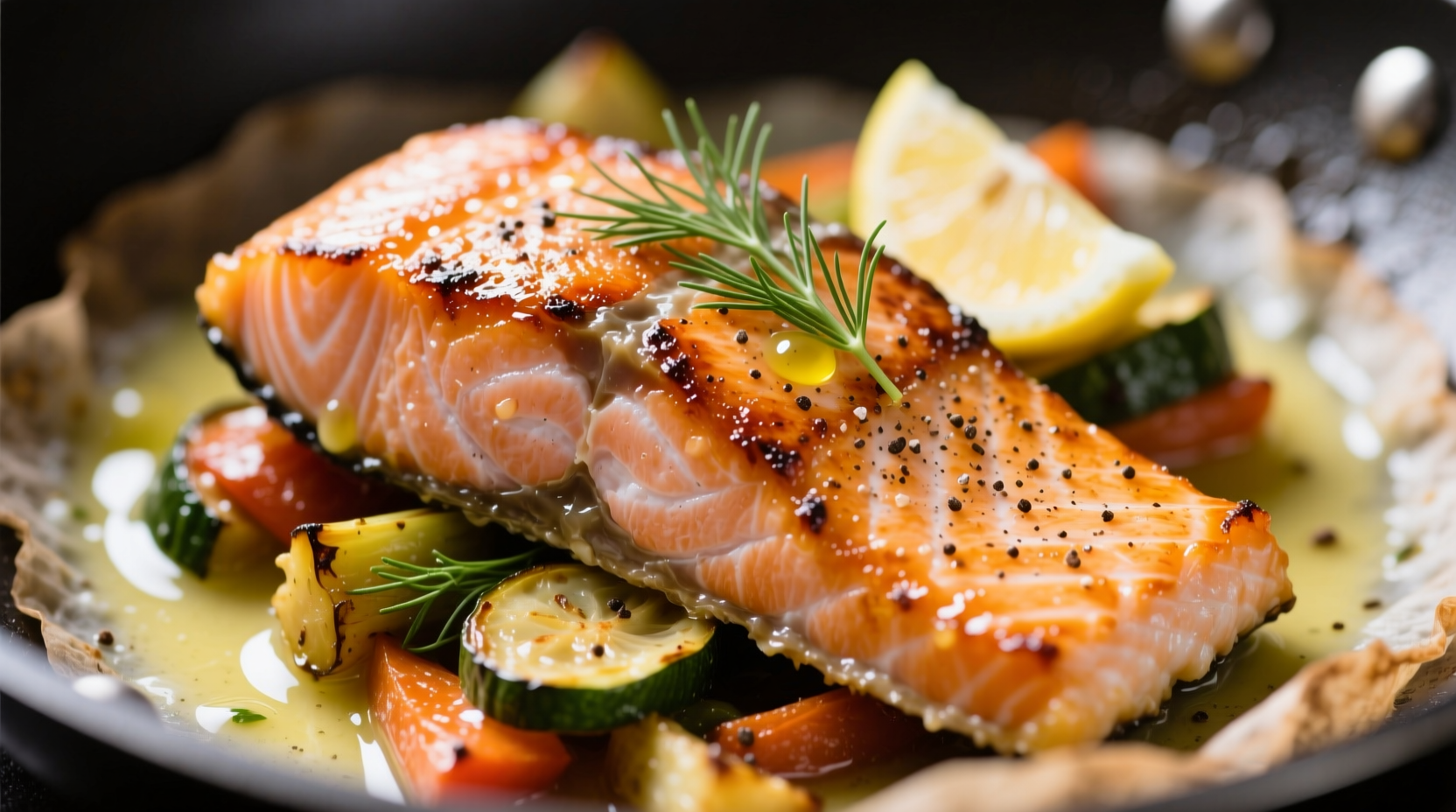The ideal internal temperature for cooking salmon is 125°F to 145°F (52°C to 63°C), depending on your preferred doneness. For medium-rare perfection with optimal moisture, aim for 125°F; for fully cooked but still moist salmon, target 135°F; and for well-done salmon that's still safe to eat, reach 145°F as recommended by the USDA.
Why Temperature Precision Matters for Salmon
Getting the temperature right isn't just about preference—it's science. Salmon's delicate fat structure begins to break down at specific temperatures, directly affecting texture and moisture retention. Unlike denser meats, salmon has minimal connective tissue, making it exceptionally vulnerable to overcooking. A mere 5°F difference can transform your salmon from succulent to dry.
Food safety remains paramount. While the USDA recommends 145°F for all fish, culinary experts note that salmon's higher fat content allows for lower temperatures when handled properly. The critical danger zone for bacterial growth is between 40°F and 140°F, so proper handling before cooking is equally important.
The Complete Salmon Temperature Spectrum
Understanding the temperature spectrum helps you achieve your desired result consistently. Here's what happens at each stage:
| Temperature Range | Doneness Level | Texture & Appearance | Safety Considerations |
|---|---|---|---|
| 110°F-115°F (43°C-46°C) | Raw/Cured | Translucent, very soft, jelly-like | Requires proper sushi-grade handling |
| 115°F-125°F (46°C-52°C) | Medium-Rare | Begins to flake at edges, center remains translucent | Safe with proper handling; not recommended for immunocompromised |
| 125°F-130°F (52°C-54°C) | Medium | Firm but moist, flakes easily with slight translucency | Optimal balance of safety and quality for most home cooks |
| 130°F-135°F (54°C-57°C) | Medium-Well | Firm texture, opaque throughout, minimal moisture loss | Safe for most populations; recommended for pregnant individuals |
| 145°F+ (63°C+) | Well-Done | Dry, firm, fully opaque, significant moisture loss | USDA minimum safety standard; often overcooked by culinary standards |
This temperature evolution reflects changing culinary standards. Historically, salmon was often overcooked due to safety concerns and limited thermometer technology. Modern understanding of food science, documented by institutions like the FDA Food Code, shows that precise temperature control allows for safer, more enjoyable results at lower temperatures than previously recommended.
How to Measure Temperature Accurately
Proper temperature measurement makes or breaks your salmon cooking experience. Follow these professional techniques:
- Use an instant-read thermometer: Thermapen or similar high-quality digital thermometers provide readings in 2-3 seconds
- Insert correctly: Place the probe into the thickest part of the fillet, avoiding bones and the cooking surface
- Check multiple spots: Especially with unevenly shaped fillets, check several areas for consistent temperature
- Account for carryover cooking: Remove salmon from heat 5°F below your target temperature as it will continue cooking
- Rest before serving: Let salmon rest 3-5 minutes after cooking to allow temperature to equalize and juices to redistribute

Temperature Guidelines by Cooking Method
Different cooking methods require slight temperature adjustments due to heat distribution and cooking speed:
Oven Roasting
Preheat to 375°F-400°F. Roast until internal temperature reaches 125°F-135°F (depending on preference). Thicker cuts (1.5+ inches) benefit from starting at 425°F for 10 minutes, then reducing to 375°F.
Pan-Seared Salmon
Cook skin-side down over medium heat until golden (6-8 minutes), then flip and cook 2-4 minutes more. Target 125°F for medium-rare. The skin creates a barrier that requires slightly higher internal temperatures for equivalent doneness.
Grilled Salmon
Use two-zone grilling: sear over direct heat, then move to indirect heat until reaching 125°F-130°F. The open flame environment creates more variable heat, making thermometer use essential.
Poached or Sous Vide Salmon
These methods allow precise temperature control. For sous vide, cook at 122°F for 30-45 minutes for perfect medium-rare. Poach in liquid maintained at 160°F-180°F until salmon reaches 125°F internally.
Visual and Tactile Doneness Indicators
When a thermometer isn't available, use these professional techniques:
- The flake test: Gently press the top of the salmon with a fork. It should separate into large flakes at medium doneness
- Color observation: Raw salmon is deep red/orange; medium-rare shows opaque edges with translucent center; fully cooked is uniformly opaque
- The touch test: Press gently with your finger. Rare feels like the base of your thumb when hand is relaxed; medium feels like your thumb when touching index finger; well-done feels firm like when touching pinky finger
- Translucency check: Cut into the thickest part with a sharp knife to check for translucency in the center
Avoiding Common Temperature Mistakes
Even experienced cooks make these temperature-related errors:
- Not accounting for carryover cooking: Removing salmon at target temperature results in overcooking. Always pull 5°F early
- Incorrect thermometer placement: Inserting too close to bone or cooking surface gives false readings
- Insufficient resting time: Cutting immediately causes juice loss, drying out the salmon
- Using visual cues alone: Lighting conditions can distort color perception, leading to inaccurate doneness assessment
- Ignoring thickness variations: Uneven fillets require checking multiple spots for accurate temperature assessment
Professional chefs from the Culinary Institute of America emphasize that consistent results come from combining thermometer use with visual and tactile cues—not relying on any single method.
Special Considerations for Different Salmon Types
Not all salmon responds identically to heat. Wild-caught salmon typically has less fat than farmed varieties, requiring more precise temperature control:
- Wild salmon: Pull at 120°F-125°F as it continues cooking to 125°F-130°F during resting
- Farmed salmon: Can handle slightly higher temperatures (125°F-130°F) due to higher fat content
- Sockeye salmon: More delicate; best cooked to medium (125°F) for optimal texture
- King/Chinook salmon: Higher fat content allows for more temperature flexibility











 浙公网安备
33010002000092号
浙公网安备
33010002000092号 浙B2-20120091-4
浙B2-20120091-4